
In the world of pay-per-click marketing, the past year has been as eventful as it’s been rocky. There’s been a litany of new advertising features released from big players like Facebook and Google, but the health of PPC advertising has felt uncertain.
In his State of PPC in 2015 presentation, WordStream CEO and PPC genius Larry Kim revealed that cost-per-click on search advertising is at an all-time high, and searches on desktop have been trending downwards for years. What’s going on?
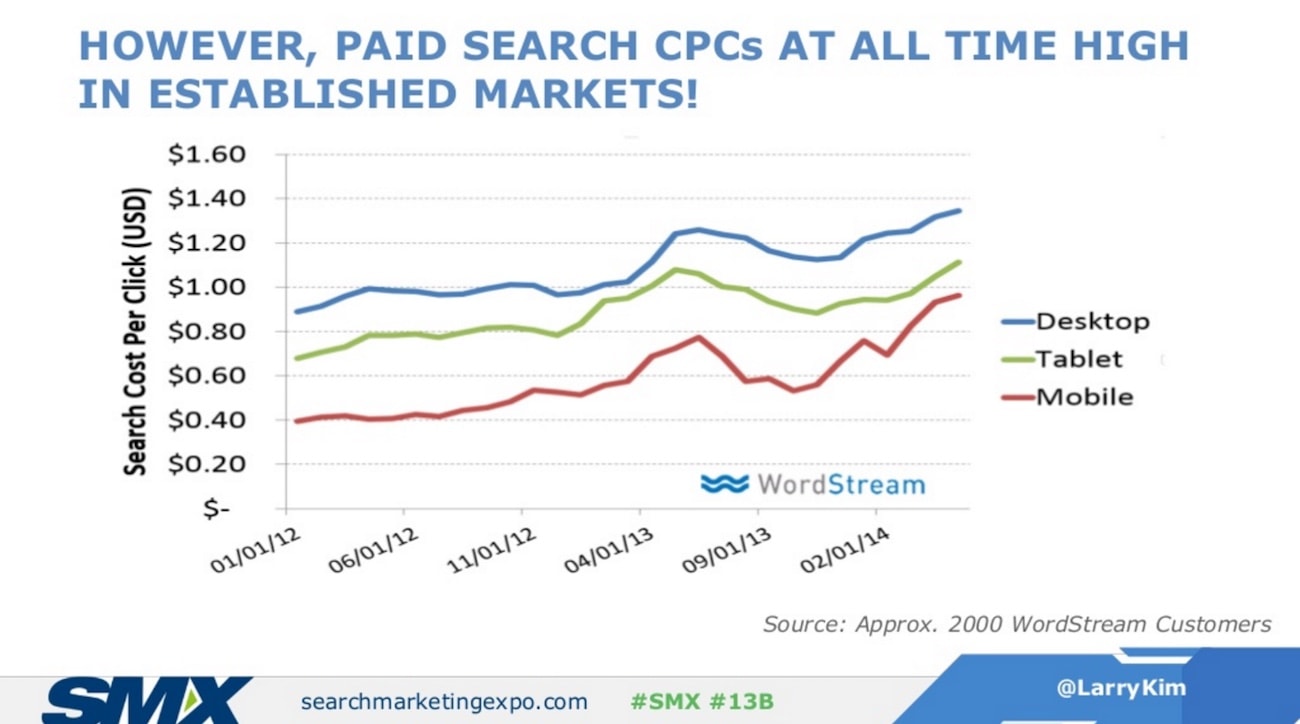
All of the huge changes happening in PPC right now can be traced back to one thing: mobile. Below, we’ll explore how the continued shift from desktop to mobile is affecting digital advertising – and the technology behemoths that enable it.
The year of mobile, now and forever
Pretty much every year since 2009, it’s been declared that whatever year it was must certainly be the year of mobile!
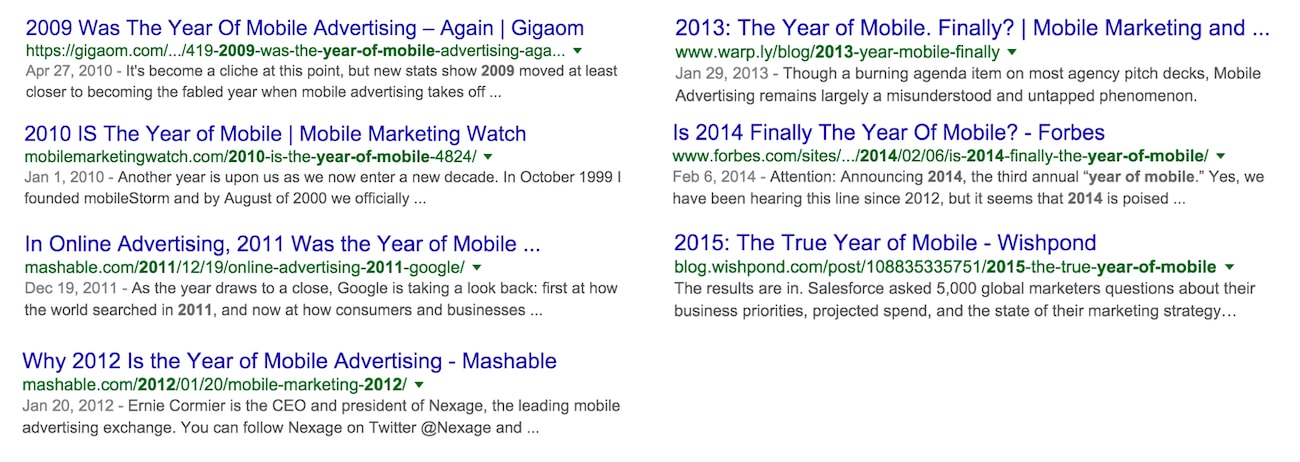
The truth is that every year since the iPhone came out, it’s been the “year of mobile” in some way, be it mobile devices becoming more sophisticated and more usable, an increase in the amount of mobile-optimized content, or increase in the success of mobile ad campaigns.
But 2015 proved that mobile isn’t just important, it’s dominant. In May, Google confirmed that mobile searches overtook desktop searches in at least 10 countries, including the US and Japan.
The bottom line is that if you haven’t started optimizing your campaigns for mobile visitors, your visitors are already looking elsewhere. Thankfully, there are plenty of steps you can take to start earning leads on mobile quickly.
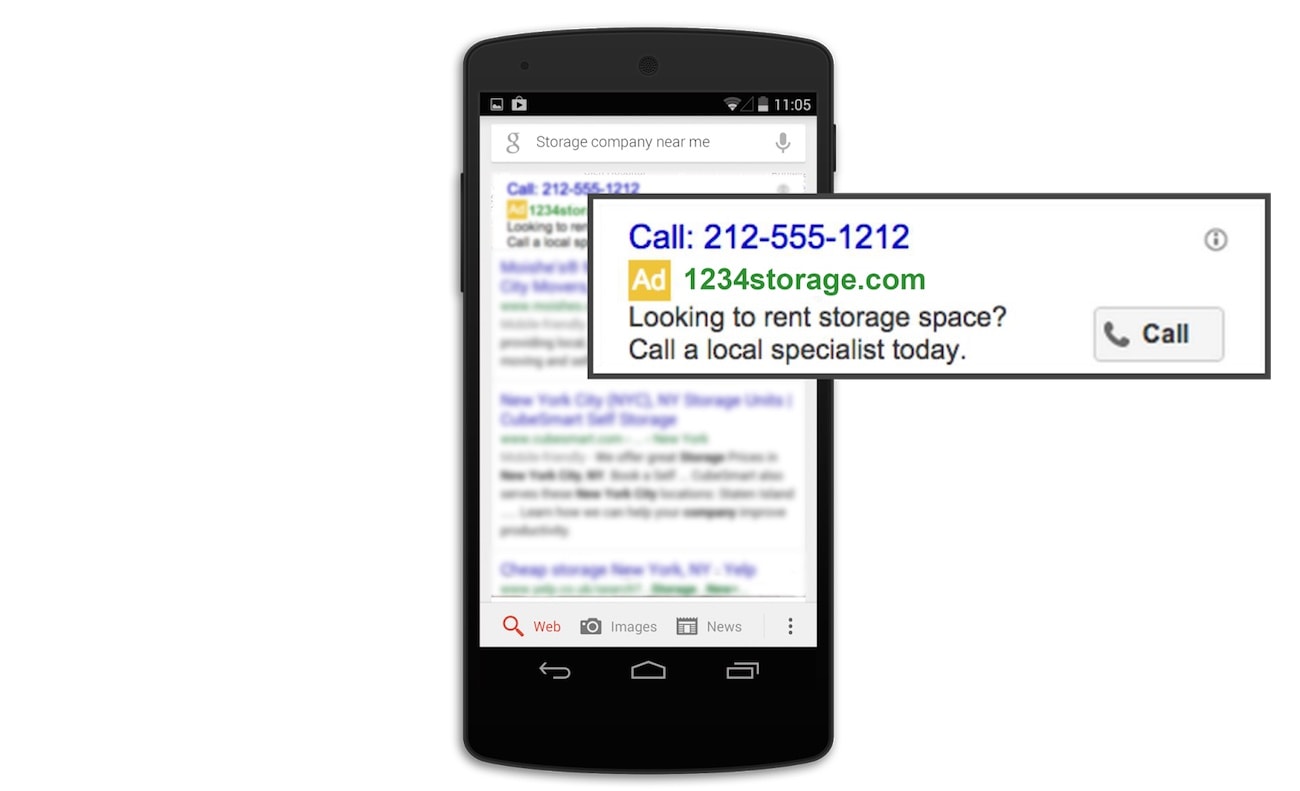
For example, the “click to call” button introduced to Google AdWords in February allows prospects to connect with you over the phone without having to click through to another page, making the conversion nearly instant.
That’s not going to always be an appropriate call to action, particularly in circumstances where you want to nurture your leads and guide them down the purchasing funnel. Thankfully, making a fully-fledged campaign landing page work on a mobile device is fairly easy, too; Unbounce templates, for example, come automatically optimized for mobile, and its Layout Assistant will help you make any Unbounce page mobile responsive.
No matter what steps you take, remember that from now on, every year is the year of mobile.
The spectre of ad-blockers
While mobile has introduced plenty of new advertising opportunities, those opportunities are severely endangered on desktop devices as the proliferation of ad blockers continues.
Pagefair, a company that allows marketers to present unobtrusive ads that circumvent ad blockers, collaborated with Adobe to produce The 2015 Ad Blocking Report. Not unbiased sources by any means, yet still, their findings were staggering: there are 200 million users worldwide using ad blockers, up 41% from 2014. Worse, they’re costing advertisers an estimated $22 billion a year in revenue.
While mobile – and iOS, in particular – have often been considered by advertisers as safe spaces where ads cannot be blocked, this changed with Apple’s introduction of “content blocking” in iOS 9.
While iOS doesn’t block ads itself, it enables developers to build and release apps that block types of content delivered through Safari. And this doesn’t just mean ads: cookies, images, pop-ups, autoplay videos and a plethora of other content types can be theoretically blocked in Safari if the developer and user choose so.
Many publications have sought to level with readers who are using ad blockers. Tech publication Wired entitled their piece covering the new functionality: Please Don’t Block Our Ads. Here’s How to Block Ads in iOS 9.
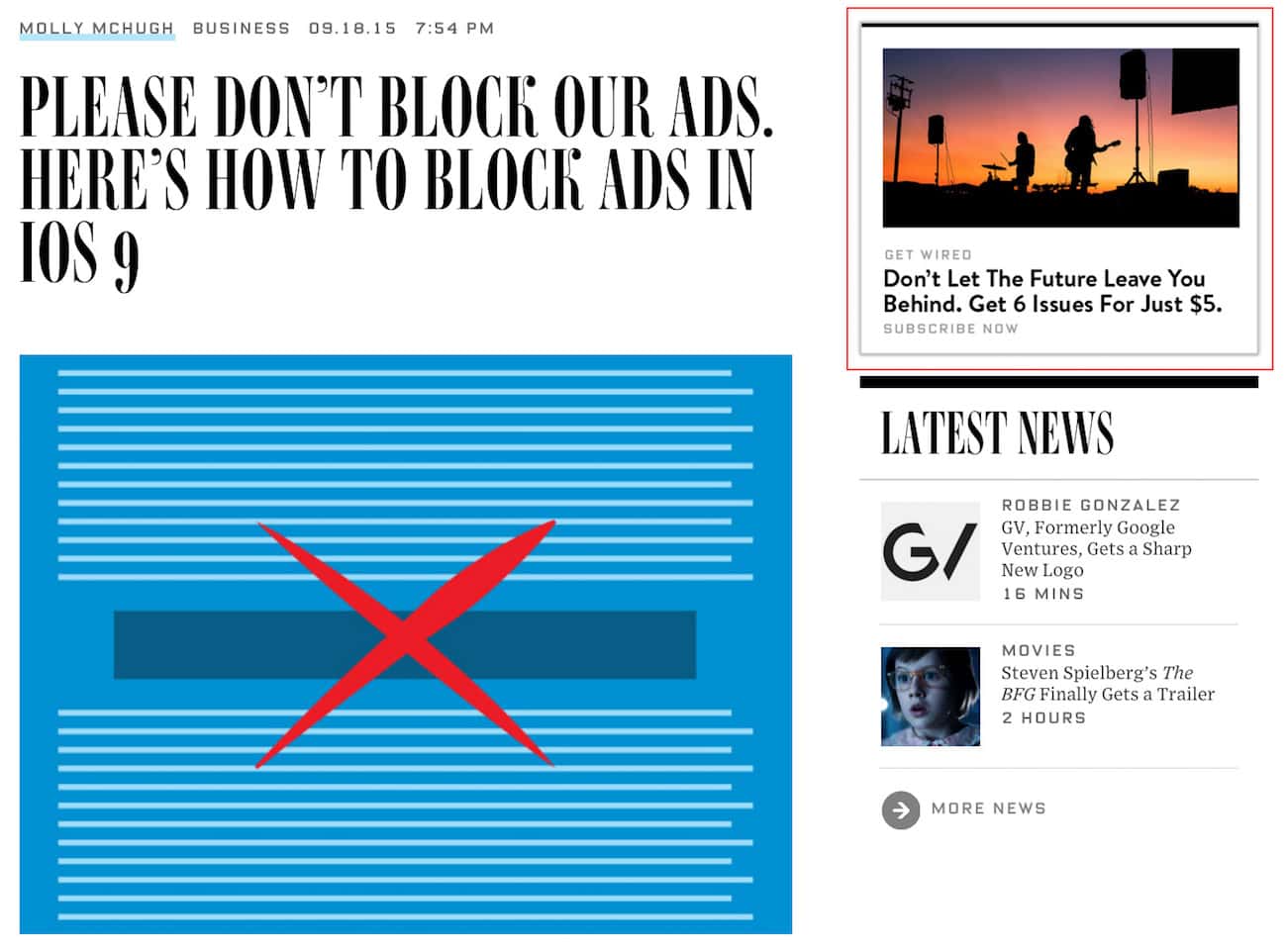
Interestingly enough, the ad asking users to subscribe to the print edition of Wired (outlined in red above) only appears if you have AdBlock enabled. And the URL it leads to? “wired.com/go/failsafe.” Clearly, this ad is a last-ditch effort to make some money out of what’s otherwise a negative-revenue scenario.
Even maker of popular web browser Firefox has entered the content blocking foray, having just this week released Focus for iOS 9, which solely blocks trackers – ads sans tracking mechanisms get through just fine, although most ads in the year 2015 come with tracking baked-in.
Content blocking hasn’t taken off yet on mobile, with publications reporting that only “1 or 2 percent” of their mobile users are using ad blockers. But considering their success on the desktop, combined with the fact that ads on mobile devices are generally more interruptive to the user experience, it’s a threat that marketers everywhere should take seriously.
The good news for advertisers: content blocking extensions only work in Safari, meaning in-app advertisements – ads delivered within an app, and not the web browser – are unaffected.
And consumer habits have long since shifted away from the browser on mobile devices: in 2014, Nielsen found that mobile users spent 89% of their time within apps versus browsing the web.
In this scenario, there is no company in a stronger position than Facebook.
The war between Google and Facebook
Facebook’s move to the public market was considered “disastrous” when it happened back in 2012, but that was also the same time when Facebook started offering mobile ads – a product they were in a unique position to take advantage of, being the destination app for hundreds of millions of people worldwide.
Since then, mobile ads have been far-and-away the most important part of Facebook’s business.
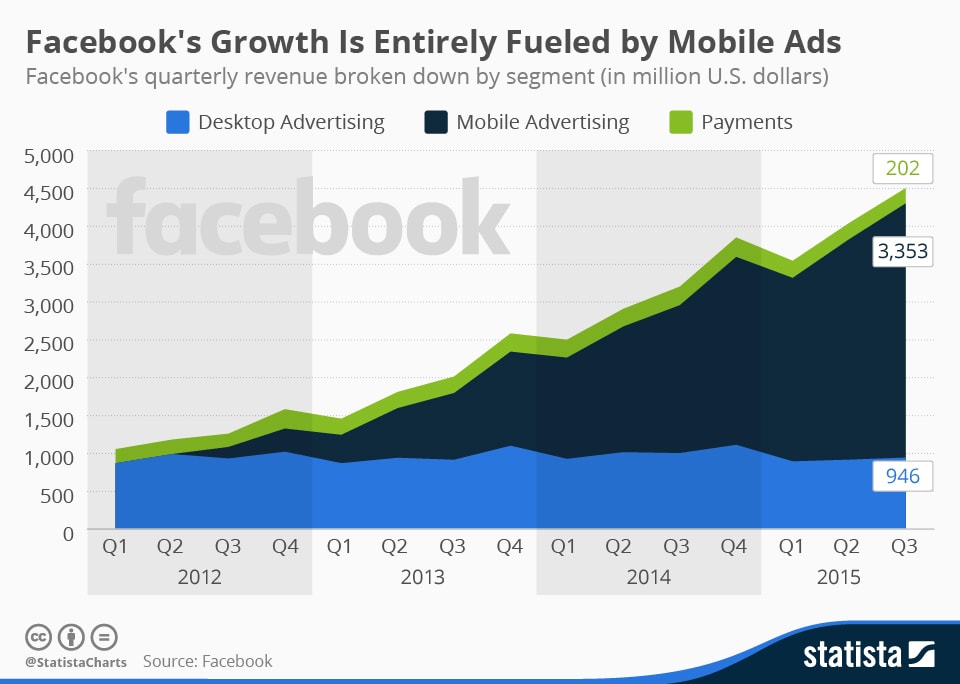
Back in October, I wrote about how the ongoing ad between Facebook and Google was leading to great new advertising products from both companies:
- Google gave us the Customer Match, which allows you to upload a list of prospects’ email addresses and target (or exclude) those prospects in your campaigns – functionality Facebook has offered for some time
- Google also introduced the ability to target audiences that it deems similar to the list you uploaded, another feature Facebook already offered; however, in Google’s case, this works only on Gmail and Youtube, and crucially, not search
- Meanwhile, Facebook opened advertising on Instagram to all marketers, along with new features like 30-second videos (compared to users’ 15-second videos) and image carousels
And recently, Facebook introduced detailed targeting, which gives marketers more flexibility in targeting their campaigns by letting them target particular combinations of factors, and letting them exclude other factors. Like so:
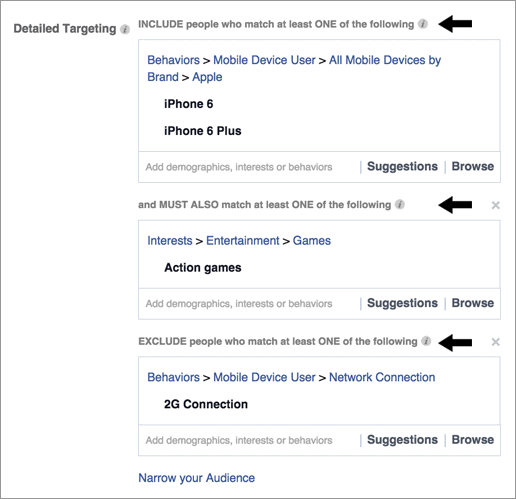
This graphic from Facebook shows how basic and detailed targeting combine to form a final audience:
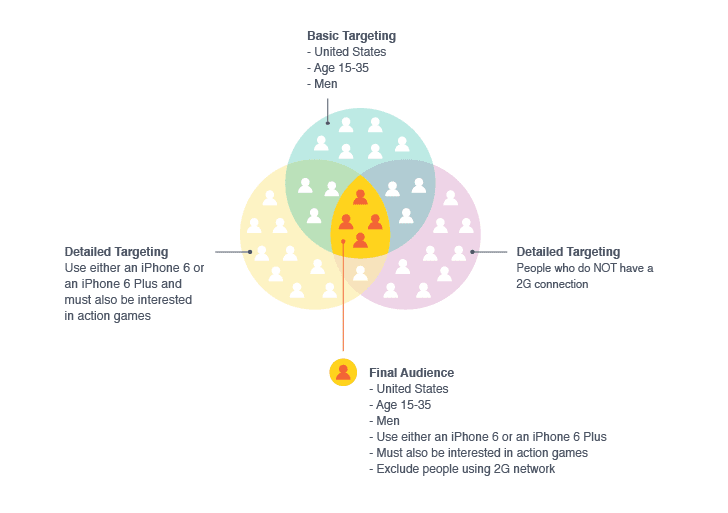
But Google isn’t resting on their laurels in the face of the stiff competition. Days ago, Google introduced a new format to AdMob, its in-app ad network. Trial-run ads allow marketers to embed 60-second app demos directly into the ad. And I don’t mean videos – I mean real, functioning apps.
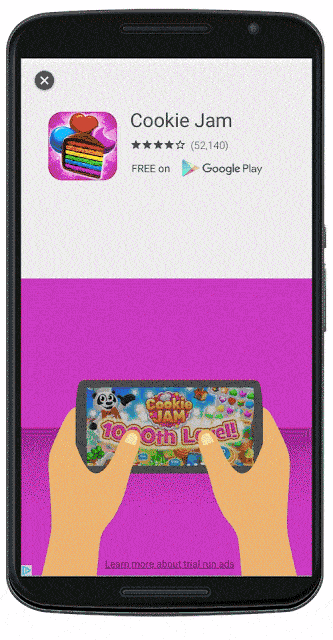
They also announced interactive interstitial ads, another in-app ad format that can be used to make interactive advertisements with HTML5.
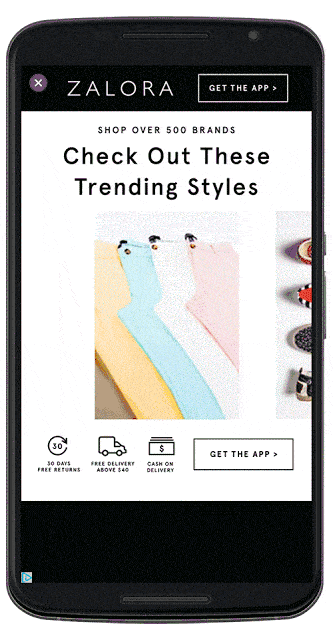
From TechCrunch:
“For example, early tester Zalora, makers of a fashion shopping app, built an ad that allows users to swipe to discover an exclusive offer. Other app marketers could create ad formats like “scratch off’s,” or use the ads to create swipeable image carousels. They can even use live app content to create real-time ad formats, says Google.”
While both of these ad formats are in beta and won’t be available to all advertisers for some time, it’s obvious that this tit-for-tat between Facebook and Google, centered almost entirely around who will own advertising on mobile devices, is leading to great developments from both sides for advertisers.
The early bird gets the click
TL;DR: PPC in 2015 has been awesome, but also terrifying.
There are countless opportunities being enabled by the proliferation of mobile, but those opportunities come at the cost of abandoning safe, time-tested tactics.
Where do we go from here? I’d have to defer back to Larry Kim:
Don’t fret the loss of old features – be the first to use new features.
The Law of Shitty Clickthroughs dictates that the clickthrough rate of any ad format trends towards zero over time. At first, users respond highly to the novelty of the format, but as humans learn to recognize the patterns of each ad format, they subconsciously tune them out.
So embrace new formats as quickly as possible. Start testing ideas and collecting data immediately. Optimize your campaigns before your competitors even begin looking at the format. The first-mover advantage is real, and it’s huge.
